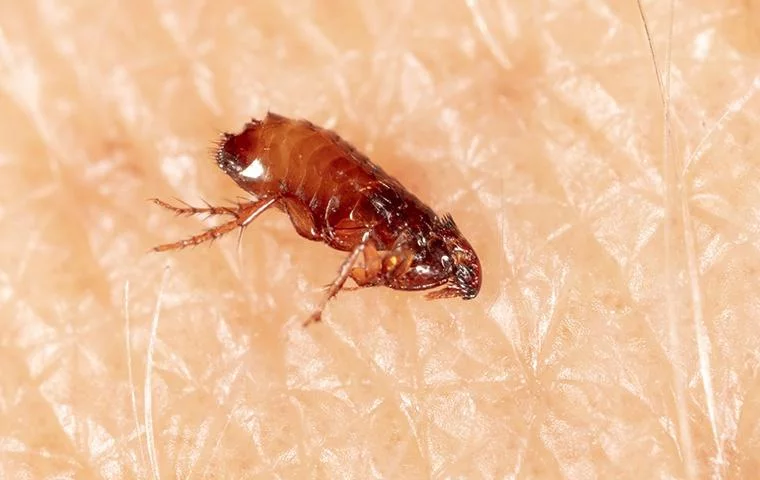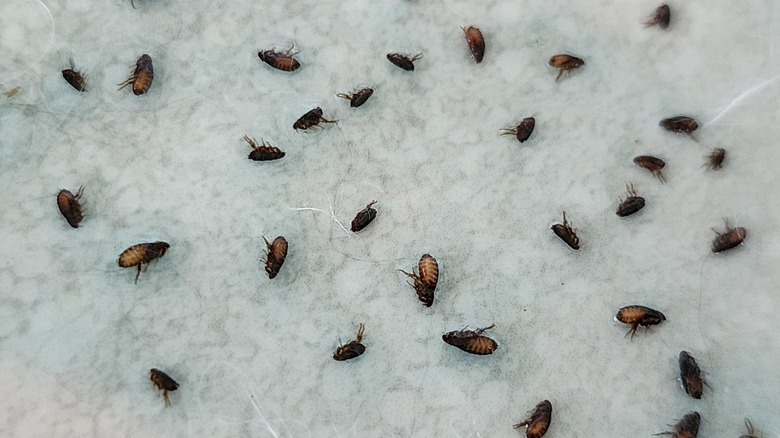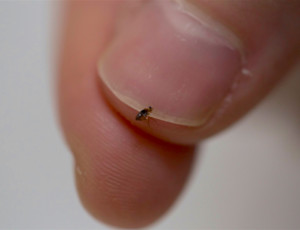Florida’s year-round mild climate entices visitors and new residents alike, thanks to its plentiful sunshine, lush landscapes, and lack of prolonged cold spells. However, these conditions also attract pests such as fleas, which flourish in warm, humid environments. Once fleas enter a property, whether through pets, yard areas, or even secondhand furniture, they can become a serious concern. Their bites cause itching and discomfort, and large infestations make basic comfort and cleanliness difficult to maintain. For homeowners and businesses around Apopka, Plymouth, and Zellwood, finding a flea exterminator who understands Florida’s conditions and can apply an effective flea treatment plan is essential for a safe, flea-free environment.
This comprehensive service page explores why fleas thrive in Florida, how to spot infestations, and the essential steps needed to eradicate them fully. By focusing on both immediate extermination and long-term prevention, residents and property owners can minimize the chance of repeat outbreaks, ensuring people and pets remain comfortable.
Understanding Florida’s Climate and Flea Infestations

- Warm Temperatures Year-Round
Fleas reproduce swiftly in hot, humid weather, which Florida has in abundance. In states with colder winters, flea populations plummet during prolonged frosts. Here, daily temperatures rarely dip low enough to drive fleas into dormancy. As a result, fleas can breed and feed throughout every season, multiplying in places that offer consistent warmth, such as indoors or well-landscaped yards. - High Humidity and Occasional Heavy Rain
Fleas must have moisture for their eggs and larvae to develop. In Florida, even short periods of rainfall can generate enough humidity for fleas to flourish in outdoor areas—especially shady spots where the sun does not dry things out quickly. If these pests sense dryness, they may shift indoors, finding shelter in carpets, pet bedding, or small crevices around baseboards. - Frequent Pet Ownership
A significant portion of Florida families owns pets, particularly dogs and cats. Fleas use these animals as hosts, clinging to fur and traveling unnoticed into homes. Even if a pet spends only a few minutes outdoors, fleas can latch on and settle in the property. For those who move between states or frequently board their pets at kennels, the risk of flea transfer rises further. - Minimal Seasonal Dormancy
Fleas in harsher climates often face severe cold that naturally kills off a large portion of their population. In Florida, an extended freezing period is a rarity. Flea populations thus remain steadier, bouncing back quickly from partial disruptions or incomplete treatments. This means property owners need a vigilant approach to flea treatment rather than relying on weather shifts to handle the problem. - Expanding Residential Areas
Communities like Apopka, Plymouth, and Zellwood experience ongoing development, new neighborhoods, and evolving landscaping. As construction changes local habitats, fleas may migrate from disturbed outdoor zones into freshly built homes or established residences with well-irrigated lawns and gardens. The constant interplay between suburban expansion and natural spaces can create prime flea habitats in yards, parks, or communal green areas.
Recognizing the Signs of a Flea Problem
- Excessive Pet Scratching
For many, the first clue emerges when a dog or cat starts scratching or biting its fur far more than usual. Flea bites cause discomfort and inflammation, prompting pets to seek relief by constant grooming. If you notice small, dark specks or flea “dirt” (flea droppings) on your pet’s bedding, that is another strong indicator of flea activity. - Flea Bites on Humans
Flea bites usually appear as small, red, itchy bumps, often on ankles or lower legs—places most accessible to jumping fleas. Some people develop more pronounced reactions with swelling or mild allergic responses. Because fleas jump quickly away from detection, noticing a pattern of new bites can be your best sign that fleas are present in your home. - Insect Sightings on Floors or Furniture
Adult fleas are tiny, dark brown, and move rapidly by leaping instead of crawling. Spotting these fleeting movements near carpets, couches, or pet resting spots may confirm an infestation. Alternatively, shining a light on your pet’s fur while brushing might reveal small fleas scurrying away from the brightness. - Flea Dirt
Flea waste, often called flea dirt, looks like coarse black pepper flakes. When moistened on a white tissue, they turn red or brown due to digested blood. Finding such specks on pet bedding or rugs suggests adult fleas are feeding on a host in or near that area. - Pupal Cases or Larvae
Flea larvae avoid light and dwell in dark corners like under furniture or rug seams. They appear as tiny, whitish worms feeding on organic debris, including adult flea droppings. Although it can be harder to locate them without thorough inspection, discovering these larvae underscores a need for professional flea exterminator assistance.

Our Approach to Flea Treatment
- Professional Inspection
An effective flea exterminator begins by assessing the entire property. This includes checking carpets, upholstered furniture, pet areas, and outdoor spaces where fleas might breed. Identifying hot spots for fleas is essential for crafting a targeted plan.- Technicians also review relevant pet routines: where they sleep, how often they go outside, and whether they roam communal yards or dog parks known for flea activity.
- Interior Treatments
Flea treatment for indoor areas typically involves vacuuming, applying specialized products, and sometimes using insect growth regulators (IGRs) that interrupt the flea life cycle. By combining adulticide products (which kill adult fleas) with an IGR (which prevents larvae from maturing), it becomes possible to prevent new waves of fleas from emerging after the initial kills.- Vacuuming: This step removes flea eggs, larvae, and droppings from deep within carpet fibers or upholstery, making subsequent treatments more effective.
- Sprays and Residual Products: Carefully chosen solutions may be applied to cracks, corners, and baseboards. Fleas often hide in low-traffic spots, so paying attention to concealed areas can significantly boost success.
- Exterior Management
In Florida, fleas often flourish outdoors before hitching rides inside on pets or clothing. Proper yard treatments help limit re-infestations:- Mowing and Landscaping: Tall grass, thick shrubbery, or damp leaf piles provide fleas with shade and moisture. Keeping lawns trimmed and removing excessive debris reduces flea breeding zones.
- Targeted Applications: A flea exterminator might apply larvicides or other products to shaded yard corners, under porches, or along fence lines. These applications disrupt flea development cycles and keep numbers manageable.
- Pet Involvement
While a pest control professional does not treat animals directly, coordinating with a veterinarian for appropriate pet flea treatments—like topical products, oral medications, or flea collars—is vital. If you only treat the home but ignore fleas on pets, or vice versa, persistent flea presence is inevitable. Regular baths using vet-approved shampoos can complement veterinarian-prescribed measures. - Follow-Up Appointments
Because fleas pass through multiple life stages—egg, larva, pupa, and adult—a single service might not eradicate every hidden flea or newly hatched larva. Scheduling follow-up visits helps confirm that no second wave of fleas emerges. If any survivors appear, re-treatment in targeted areas prevents them from re-establishing. - Prevention and Maintenance
After the population drops, property owners receive tips on preventing a re-infestation:- Washing pet bedding regularly with hot water to kill eggs or larvae.
- Vacuuming frequently, especially where pets rest.
- Maintaining yard upkeep and quickly addressing any stray animals visiting the property.
- Checking pets for fleas after outdoor activities and administering preventative treatments per veterinarian guidance.
- Professional Inspection
Service Areas: Apopka, Plymouth, and Zellwood
Our flea treatment and exterminator services are available to residents of Apopka and the neighboring communities of Plymouth and Zellwood. Each location combines Florida’s trademark warmth and humidity, which ensure fleas remain active for most of the year. Whether you manage a multi-pet household, operate a kennel, or simply want to secure your single-family home from fleas, timely and thorough action keeps these pests from proliferating indoors.
Because fleas can hop onto clothing, ride in vehicles, or attach to everyday household objects, ignoring the problem rarely leads to a resolution. Left to their own devices, fleas progress from one or two sightings to extensive infestations that spread across multiple rooms or levels of a building. By addressing an outbreak early, you not only protect your pets from annoying bites or potential tapeworm transmission but also shield guests or family members from repeated itching and discomfort.

Why Choose a Professional Flea Exterminator
- Expert Knowledge of Florida’s Environment
Contending with fleas in Apopka, Plymouth, or Zellwood requires understanding how these insects behave in a subtropical climate. Trained professionals can spot which shady yard pockets might harbor fleas, which interior cracks are prime breeding spots, and how often reapplications may be needed. This local insight speeds up resolution, saving you from repeated partial fixes. - Customized Treatment Strategies
Each property differs in terms of yard layout, occupant habits, and pet routines. Relying on a one-size-fits-all product might offer fleeting relief but not a lasting solution. A thorough inspection informs a multi-pronged approach, adjusting insecticides, growth regulators, and yard treatments to match the severity and location of a flea infestation. - Safe, Targeted Applications
Professionals take care to apply treatments in areas frequented by fleas—carpets, baseboards, yard perimeters—rather than blanketing entire structures. This focused technique curbs the risk to beneficial insects or the broader environment. By choosing scientifically proven methods, a well-designed plan promotes effectiveness while minimizing unnecessary exposure to chemicals. - Coordination with Pet Care
Skilled exterminators recognize that ignoring fleas on pets leads to persistent re-infestations. Though they do not medicate pets directly, they often collaborate with or advise owners to seek veterinary guidance. This synergy ensures that both the property and its four-legged residents are simultaneously managed for fleas, bringing about the best possible outcomes. - Educating Property Owners
Flea removal is most successful when homeowners or tenants understand potential vulnerabilities—like unwashed pet bedding, cluttered storage rooms, or yard debris that fosters flea eggs and larvae. By learning how to manage these points of entry and growth, you gain control over long-term prevention, reducing the chance of another outbreak.
Next Steps
If you have noticed fleas in your home or on your pets, or if you suspect an infestation in Apopka, Plymouth, or Zellwood, taking swift action can prevent fleas from taking over. Contact us to learn more or schedule your service. A dedicated approach to flea treatment addresses both adult insects and developing flea eggs, stopping future generations from emerging inside your living space.
Beyond simple extermination, the goal is to make your property a less inviting place for fleas to breed. By working with a knowledgeable flea exterminator, you can protect your pets, family members, and guests from repeated itching, potential skin infections, or secondary issues that fleas can bring. Whether you run a local pet-friendly business or maintain a household with multiple animals, a thorough plan combining interior and yard strategies can keep fleas at bay.
Managing fleas in Florida demands sustained vigilance, especially in areas like Apopka where warm, humid days reign for much of the year. However, with a concentrated effort—utilizing professional treatments, yard management, and consistent pet care—you can reduce the likelihood of fleas returning. Effective treatment starts with pinpointing where fleas hide, whether in your pet’s bedding, beneath carpets, or in shady sections of the yard. Coupled with well-placed insect growth regulators and routine checks to ensure newly hatched fleas do not reclaim ground, these actions form the backbone of a stable, flea-free environment.
When fleas are completely eradicated and strong preventive measures are in place, you regain the ability to enjoy your home or business without worry. No more uncomfortable bites, endless scratching, or concerns about insect-borne risks for your pets. Instead, you can focus on taking pleasure in Florida’s sunshine, confident that your property remains safeguarded against flea infestations.
